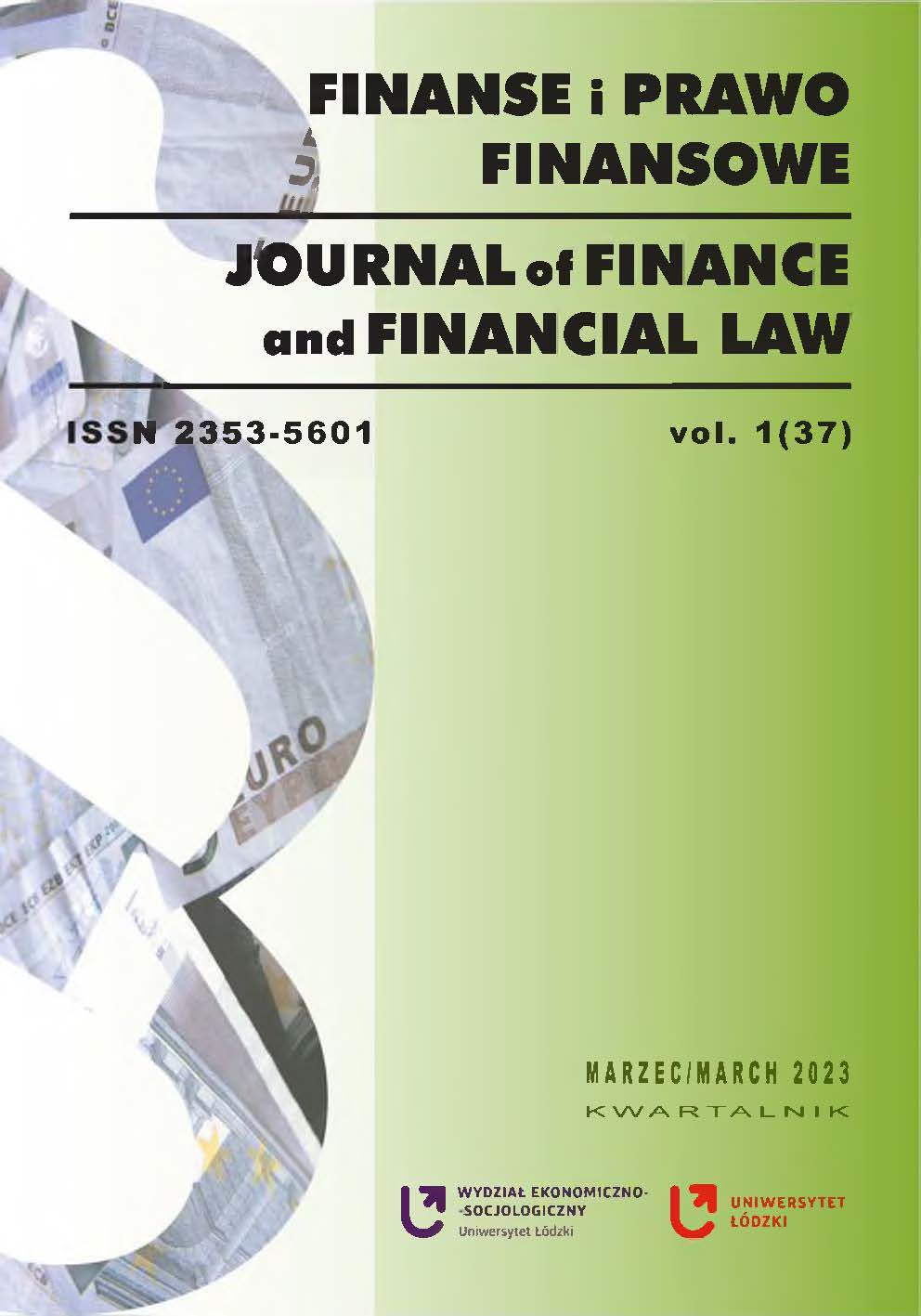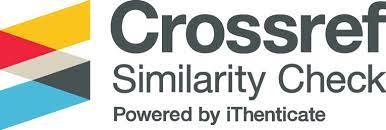Analysis and Evaluation of Financial Liquidity of Companies with Low Market Value Listed on the Warsaw Stock Exchange
DOI:
https://doi.org/10.18778/2391-6478.1.37.03Keywords:
financial liquidity, static liquidity ratios, capitalization, company, Warsaw Stock ExchangeAbstract
The purpose of the article/hypothesis: The purpose of this article is to analyze and evaluate the liquidity of listed companies with low capitalization, whose market value did not exceed PLN 20 million. The study takes as a hypothesis that companies with low market value listed on the Main Market of the Warsaw Stock Exchange maintain low levels of financial liquidity ratios, which translate into a negative evaluation of financial liquidity.
Methodology: The study covered companies listed on the Main Market of the Warsaw Stock Exchange, whose market value was less than PLN 20 million. The study covered the years 2018–2020. The study used classical tools applied in the evaluation of corporate liquidity: the current liquidity ratio, quick liquidity ratio and cash liquidity ratio, as well as tools of descriptive statistics.
Results of the research: Based on the research, it was found that companies with small market capitalization listed on the Main Market of the Warsaw Stock Exchange maintain liquidity ratios that are often below theoretical values. This means that the activities of companies whose market value was less than PLN 20 million are accompanied by an increased solvency risk, which translates into a worse assessment of the financial situation of companies and their low market valuation. In addition, on the basis of the research conducted, it was shown that there is a large differentiation of financial liquidity by sector of companies.
Downloads
References
Adamska A. (2016), Ryzyko płynności finansowej przedsiębiorstwa i jego raportowanie, (w:) Przewrotność współczesnych finansów, pod red. P. Deca, Oficyna Wydawnicza Szkoła Główna Handlowa, Warszawa.
Google Scholar
Bardia S.C. (2004), Liquidity Management: A Case Study of Steel Authority of India Ltd. Management Accountant Calcutta. ICWAI, Kolkata.
Google Scholar
Bednarski L., Waśniewski T. red. (1996), Analiza finansowa w zarządzaniu przedsiębiorstwem, Fundacja Rozwoju Rachunkowości w Polsce, Warszawa.
Google Scholar
Białas K. (2017), Rola dynamicznych wskaźników płynności finansowej w zarządzaniu przedsiębiorstwem, Finanse i Prawo Finansowe, Vol. 1, tom 13, https://doi.org/10.18778/2391-6478.1.13.02
Google Scholar
DOI: https://doi.org/10.18778/2391-6478.1.13.02
Bolek M., Wiliński W. (2012), The influence of liquidity on profitability of Polish construction sector companies, e-Finanse: Financial Internet Quarterly, Vol. 8, Issue 1.
Google Scholar
Cicirko T. red. (2010), Podstawy zarządzania płynnością finansową przedsiębiorstwa, Oficyna Wydawnicza Szkoła Główna Handlowa w Warszawie, Warszawa.
Google Scholar
Eljelly A. M. A. (2004), Liquidity ‐ profitability tradeoff: An empirical investigation in an emerging market, International Journal of Commerce and Management, Vol. 14, No. 2, https://doi.org/10.1108/10569210480000179
Google Scholar
DOI: https://doi.org/10.1108/10569210480000179
Ehiedu V. C. (2014), The impact of liquidity on profitability of some selected companies: The financial statement analysis (FSA) approach, Research Journal of Finance and Accounting, Vol.5, No.5.
Google Scholar
Gabrusewicz W. (2005), Podstawy analizy finansowej, Polskie Wydawnictwo Ekonomiczne, Warszawa.
Google Scholar
Irawan A., Faturohman T. (2015), A Study Of Liquidity And Profitability Relationship: Evidence From Indonesian Capital Market, International Journal of Management and Applied Science, Vol. 1, Issue 9.
Google Scholar
Kuciński A. (2018), Statyczna ocena płynności finansowej przedsiębiorstwa – ujęcie teoretyczne. Research on Enterprise in Modern Economy – theory and practice, Quarterly Journal, No. 2 (25), https://doi.org/10.19253/reme.201.02.007
Google Scholar
Kusak A. (2006), Płynność finansowa: analiza i sterowanie, Wydawnictwo Naukowe Wydziału Zarządzania Uniwersytetu Warszawskiego, Warszawa.
Google Scholar
Łojek, P. (2020), The relationship between profitability and financial liquidity among the importers of best-selling brands of new cars in Poland, Central European Economic Journal, Vol.7, No.54, https://doi.org/10.2478/ceej-2020-0011
Google Scholar
DOI: https://doi.org/10.2478/ceej-2020-0011
Maślanka T., (2019), Płynność finansowa determinantą zdolności kontynuacji działalności przedsiębiorstwa, Wydawnictwo CeDeWu, Warszawa.
Google Scholar
Maślanka T. (2013), Zakłócenia metodologiczne w ocenie bieżącej płynności finansowej polskich przedsiębiorstw, Zarządzanie i Finanse, Vol. 2, Issue 2.
Google Scholar
Niresh J. (2012), Trade-Off between Liquidity & Profitability: A Study of Selected Manufacturing Firms in Srilanka, International Refereed Research Journal, Vol. 3, No. 4.
Google Scholar
Nowak E. (2017), Analiza sprawozdań finansowych, Wydawnictwo PWE, Warszawa.
Google Scholar
Peel M. J., Wilson N., Howorth C. (2000), Late payment and credit management in the small firm sector: some empirical evidence, International Small Business Journal: Researching Entrepreneurship Vol.18, No.2, https://doi.org/10.1177/0266242600182001
Google Scholar
DOI: https://doi.org/10.1177/0266242600182001
Saravanan S. (2011), Empirical Research on Relationship between Working Capital and Profitability - A Case Study of Pricot Meridian Ltd, Coimbatore, International Journal of Marketing and Management Research, Vol. 2, Issue 10.
Google Scholar
Shim J. K., Siegel J. G. red. (2000), Financial Management, Publisher Barron‘s.,
Google Scholar
Sierpińska M., Jachna T. (2004), Ocena przedsiębiorstwa według standardów światowych, Wydawnictwo Naukowe PWN, Warszawa.
Google Scholar
Śnieżek E. (1999), Przepływy pieniężne ex post ex ante, Fundacja Rozwoju Rachunkowości w Polsce, Warszawa.
Google Scholar
Śnieżek E., Wiatr M. (2015), Przepływy pieniężne, Wolters Kluwer, Warszawa.
Google Scholar
Walczak M. red., (2007), Analiza finansowa w zarządzaniu współczesnym przedsiębiorstwem, Wydawnictwo Difin, Warszawa.
Google Scholar
Wędzki D. (2019), Analiza wskaźnikowa sprawozdania finansowego według polskiego prawa bilansowego, Wydawnictwo Nieoczywiste, Łódź.
Google Scholar
Wędzki D. (2003), Strategie płynności finansowej przedsiębiorstwa – przepływy pieniężne a wartość dla właścicieli, Wydawnictwo Oficyna Ekonomiczna, Kraków.
Google Scholar
Zimon G. (2020), Financial Liquidity Management Strategies in Polish Energy Companies, International Journal of Energy Economics and Policy, Vol.10, No.3, https://doi.org/10.32479/ijeep.9150
Google Scholar
DOI: https://doi.org/10.32479/ijeep.9150
Zuba M. (2009), Związek rentowności i płynności finansowej przedsiębiorstwa, Zeszyty Naukowe WSEI w Lublinie, seria Ekonomia.
Google Scholar
Downloads
Published
How to Cite
Issue
Section
License

This work is licensed under a Creative Commons Attribution-NonCommercial-NoDerivatives 4.0 International License.














